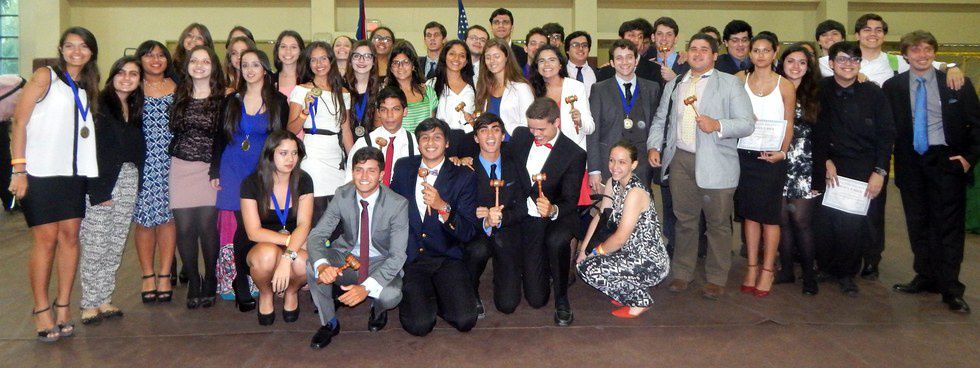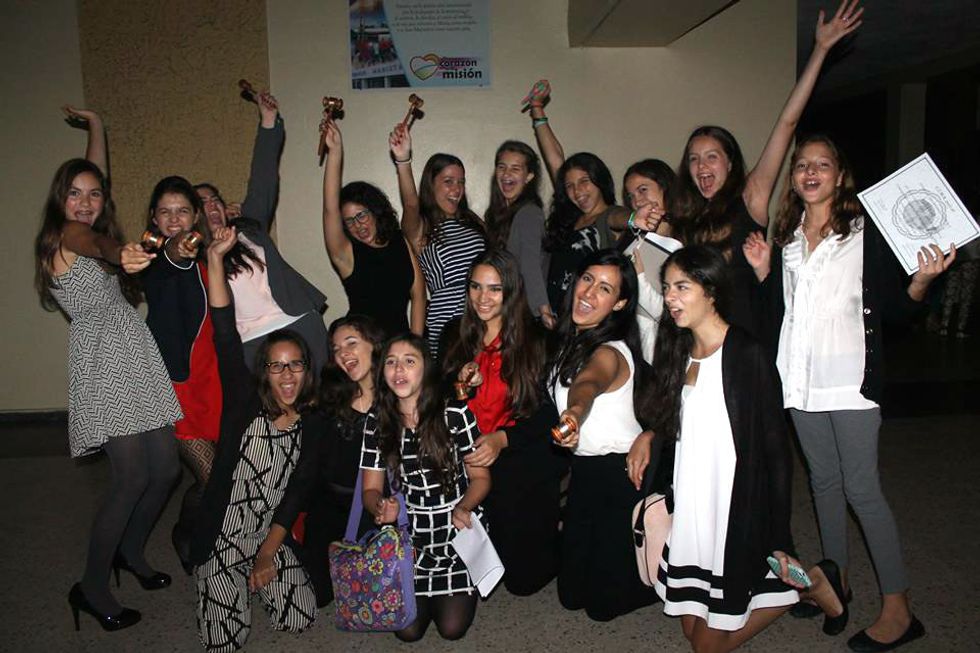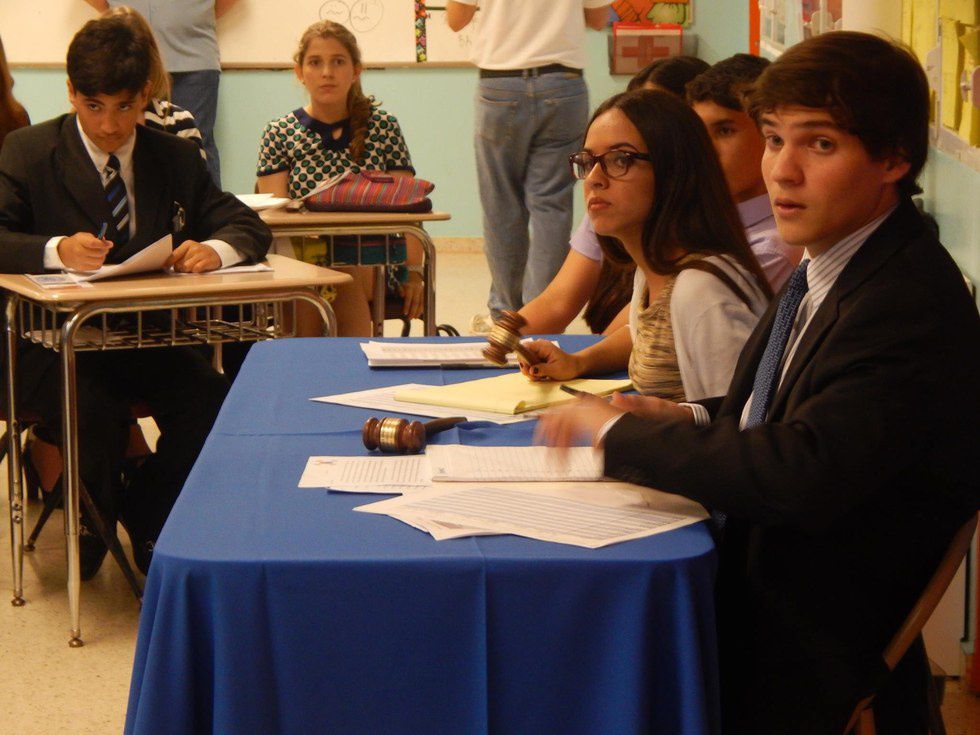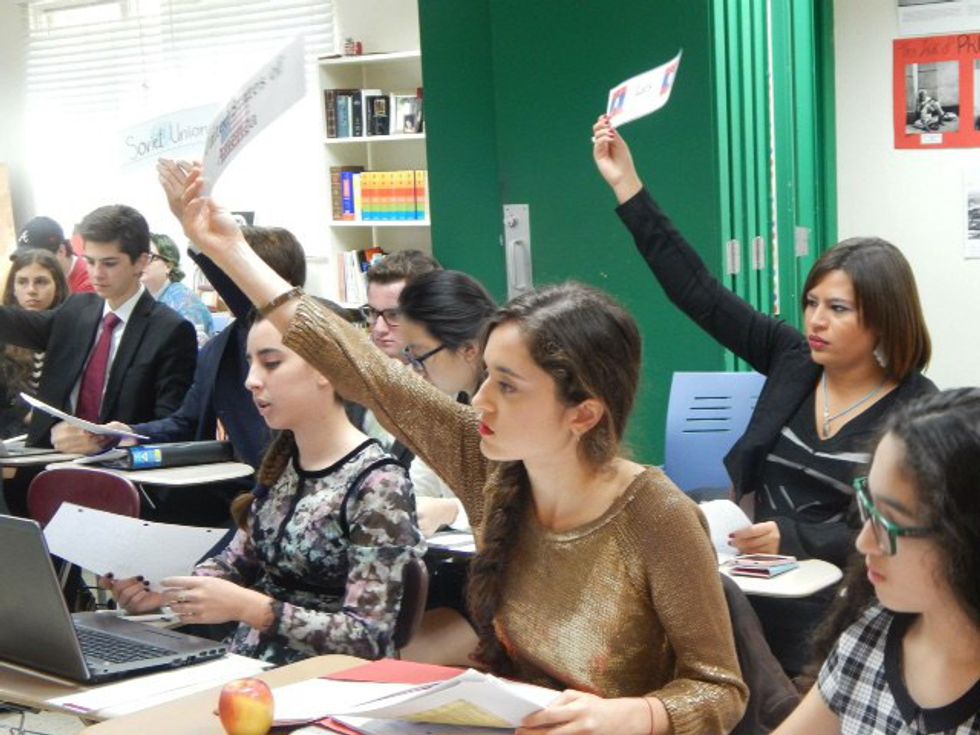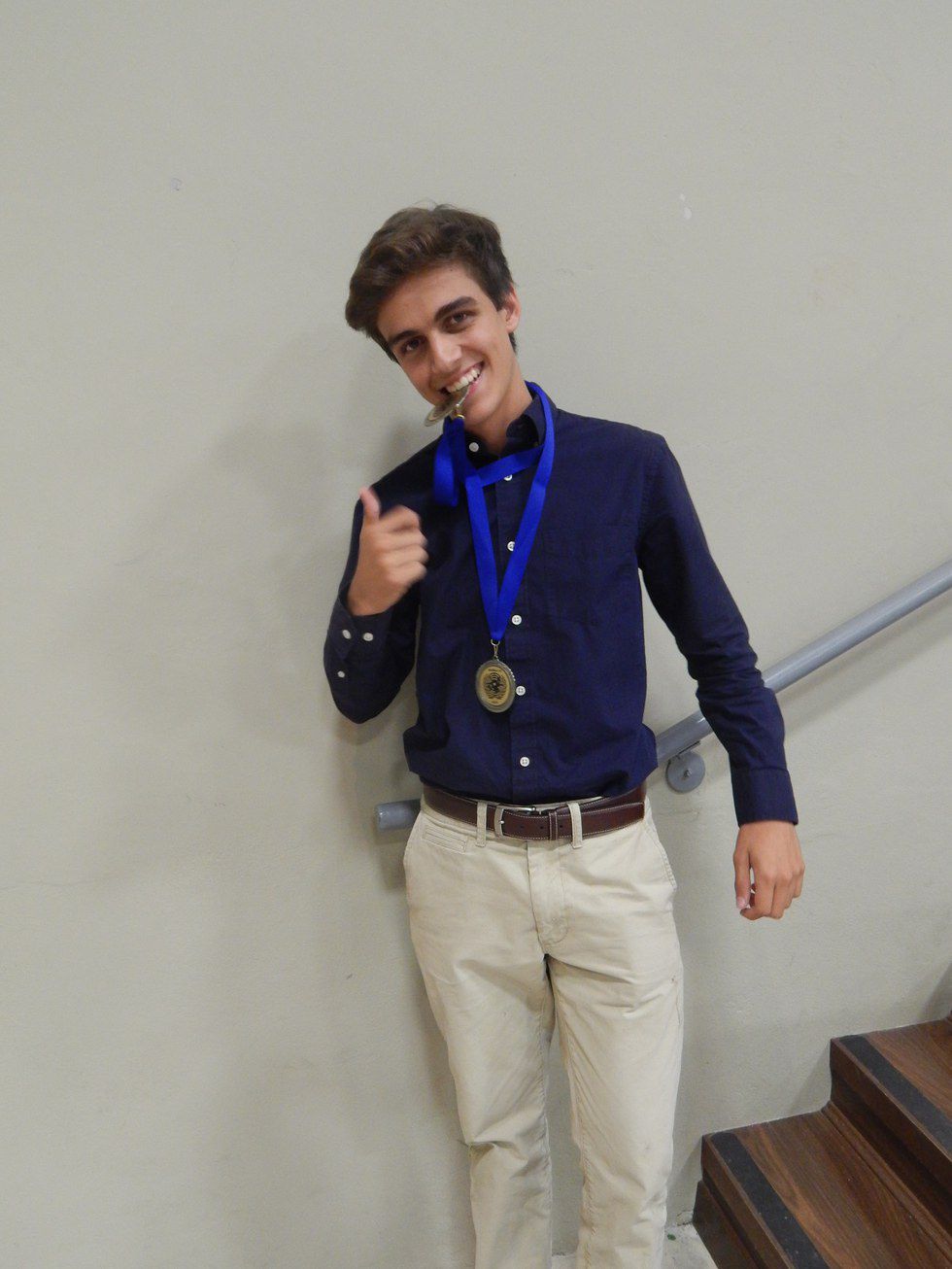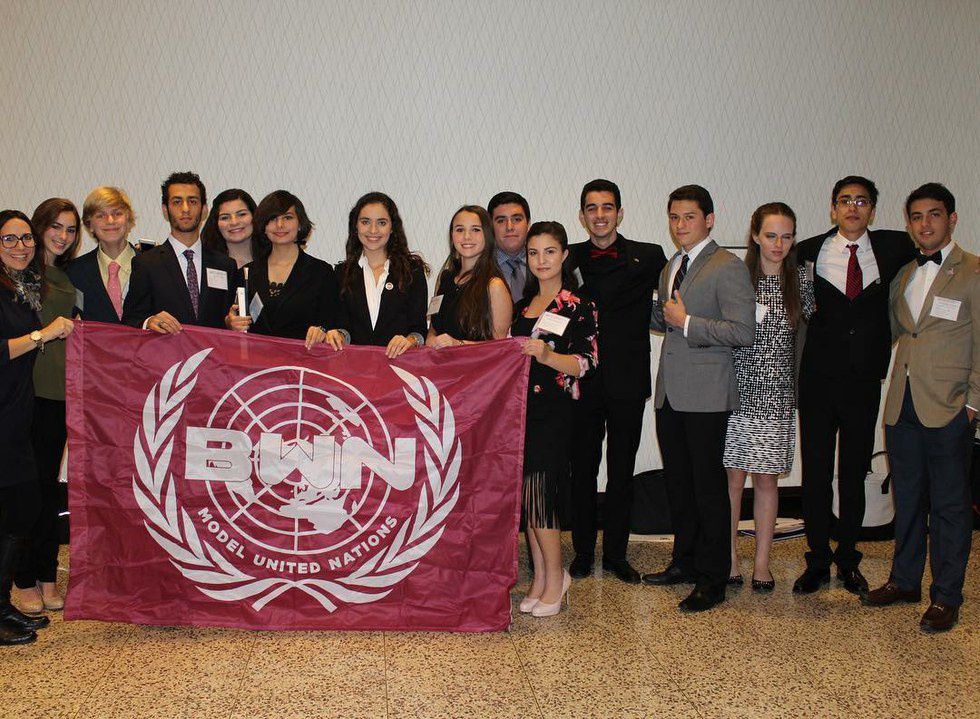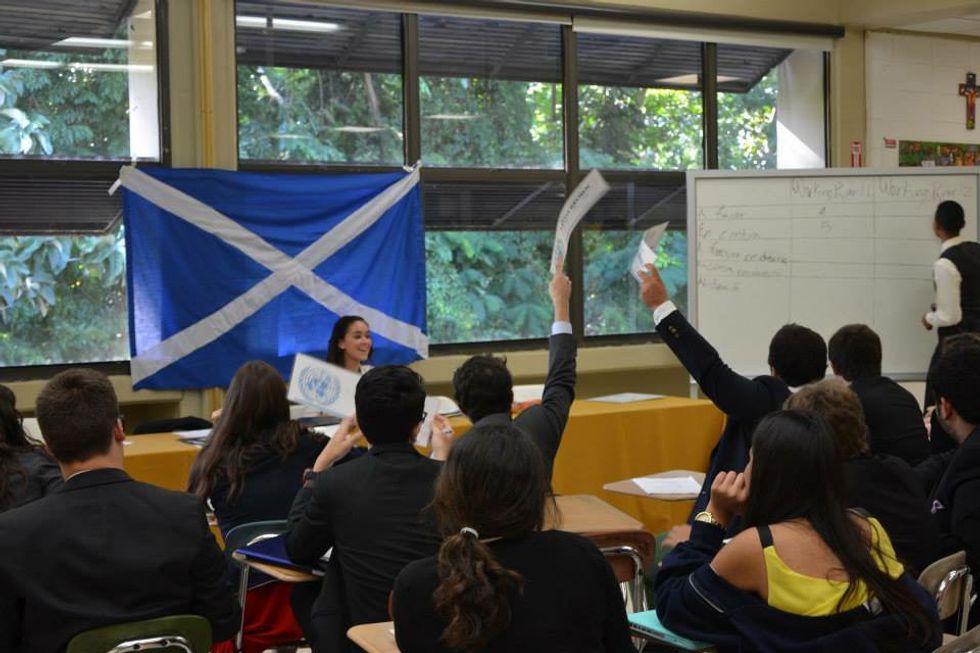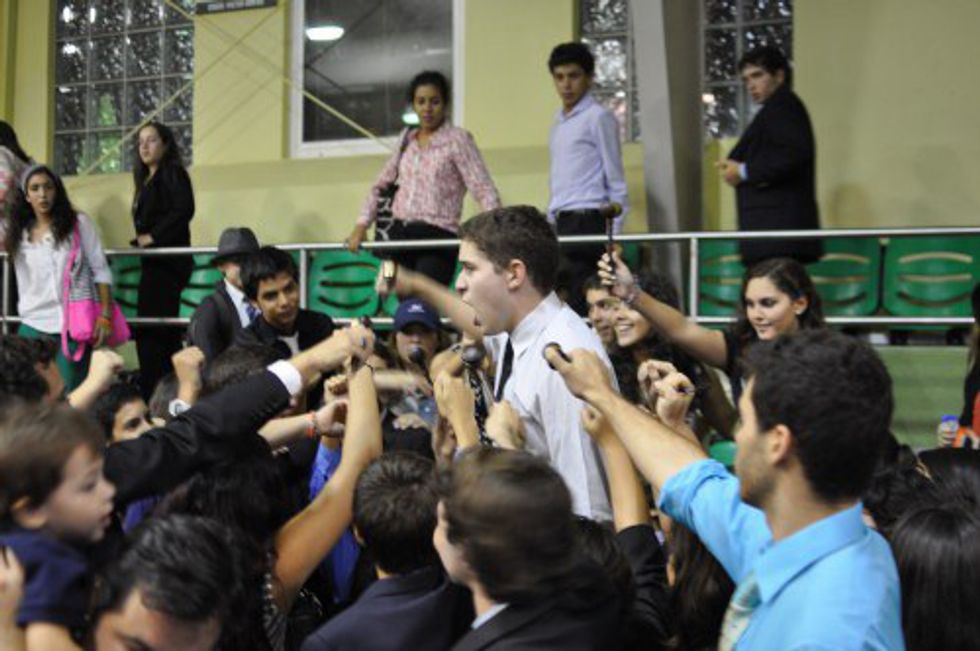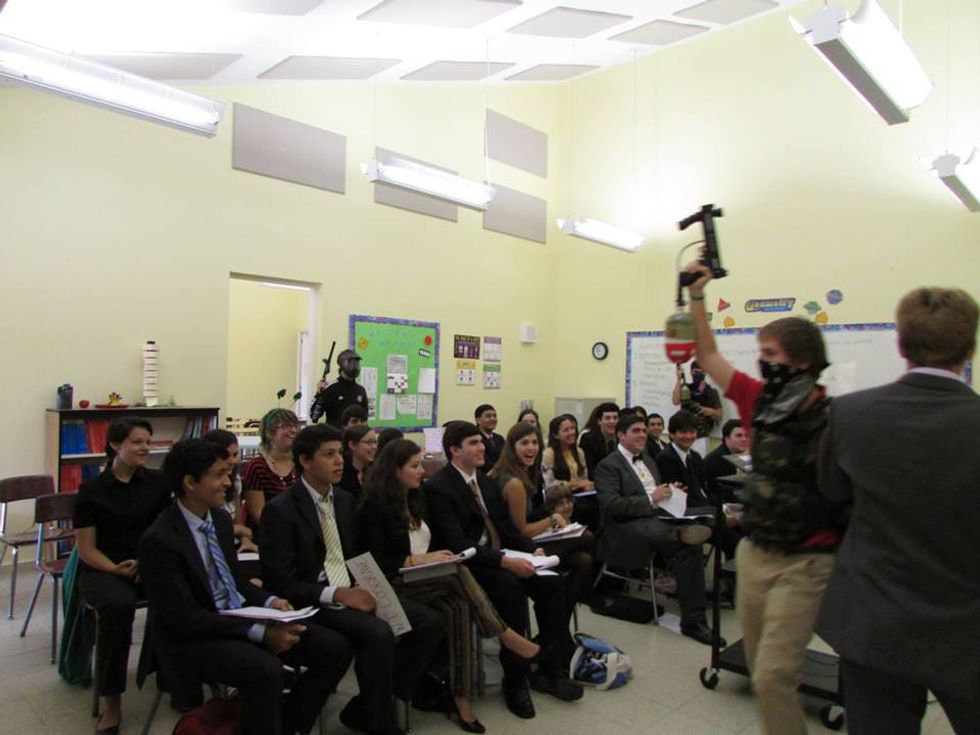As current Model UN vice-president of my club and 5th year veteran in the organization, Model UN has basically become my second life, my oxygen if you will. But, in past years, as I've attended conferences in the U.S., I've noticed how different the Puerto Rican style of debating is from the international approach. And so, I decided to make a list of some facts about La Federación de las Naciones Unidas de Puerto Rico that other high school delegates might not know...
1. La Federación is one of two MUN circuits on the island.
Although Federación is the most known in Puerto Rico, El Congreso is the other Model UN circuit within high schools of Puerto Rico. As my school is a member of Federación, I know more of its system than I do of El Congreso's.
2. It is comprised of 9 schools from the Metro area
These are Academia Maria Reina (AMR), Academia Perpetuo Socorro (APS), Academia San Jose (ASJ), Baldwin School of Puerto Rico, Colegio Marista, Colegio Puertorriqueño de Niñas (CPN, pictured above), Colegio San Ignacio de Loyola (CSI), Saint John's School (SJS), and TASIS School of Dorado. Every year, five of the nine schools rotate as host schools for the five conferences of the year (3 during the first semester, 2 during the second semester).
3. Every school sends 1 (or 2) of their best delegates to each competition to serve as a chair person.
Normally high school juniors or seniors, each committee at the conference has 2 members of the dais from 2 different schools so no bias occurs when awarding points. Every school should only send 1 person, excluding the 4 non-host schools of that season, which are allowed to send 2 people to serve as chair persons to 2 conferences of that school year.
4. Awards are determined by a points system and a rubric
At the beginning of committee, every member of the dais receives a rubric in which they have different areas that they give delegates a 3, 2 or a 1 in (excluding their position paper grade, which is normally a score out of 10 or 15). I find this to be the biggest difference between conferences on the East Coast and conferences in Puerto Rico, as East Coast conferences take a more holistic approach to determine awards. When talking to fellow Federación delegates who have competed in conferences such as ILMUNC, NAIMUN, MUNUC and HMUN, they are frustrated when closing ceremonies come around and other delegates who didn't lead a bloc as much as they did win prizes instead of them; the transparency of Federación points system is something that I believe should be intergrated into the stateside conference system.
5. We are a bilingual circuit
As a former Spanish colony and current territory of the U.S., la Federación allows delegates to debate in either Spanish or English, so long as they only use that language for the remainder of the conference. TASIS alumni Julian Bava wrote a great listicle for Best Delegate (which I highly recommend) discussing the 5 advantages of being in a bilingual circuit.
6. Our teams are some of the best in the world
Best Delegate, a website founded by Ryan Villanueva and Kevin Felix Chan in 2010 to help others succeed in Model UN, has published rankings for the best high school Model UN teams since its beginning and has continued to do so (excluding the 2015-2016 season). In the 2011-2012 spring rankings, we had St. John's School in the top 150 of the world, TASIS in the top 125, Colegio San Ignacio and Baldwin in the top 75, and CPN in the top 50. For the 2012-2013 final rankings, the same 4 schools ranked in the International Top 25, and once again in the 2013-2014 final rankings.
Our teams have also left a significant mark in East Coast conferences, with CPN winning Best Small Delegation at ILMUNC in 2012 and Best International Delegation at ILMUNC in 2014, best known for their presence in crisis committees, with their delegates winning Best Delegate and Outstanding Delegate in 2014, 2015 and 2016; in recent years, CSI has won multiple Honorable mentions at ILMUNC and HMUN, and even a Best Delegate in ILMUNC's GA Legal Committee in 2015. Baldwin's presence at NAIMUN is certainly undeniable,with their recent Best Delegate win in 2015 and Outstanding Delegation in 2016 .
7. Federación conferences are normally smaller than U.S. ones
While normal stateside conferences normally average 2,500 to 3,000 delegates, Puerto Rican conferences only get about 250 delegates. This is usually because of the amount of student at the respective schools, as there's some schools that have 50 students per grade and others have about 150 per grade, and how many of them want to join their teams.
8. Model UN is very intense in Puerto Rico
Although I've had wonderful experiences both times I've been able to go to stateside conferences, I (along with other Puerto Rican delegates) have noticed that this is the most significant difference between U.S. and P.R. conferences. In stateside conferences, delegates are more calm and motion for unmoderated caucases to make deals with their fellow delegates so that their resolution will be passed in committee; this is the exact opposite of what Puerto Rican delegates do back home. Federación delegates are involved in a fast-moving debate throughout committee, where you'll generally find loud talking and delegates walking around the front of the room while they debate their delegation's position. Even at a conference's closing ceremonies, you can tell which school has just won Best Delegate in a committee by their teammates' roaring applause and cheers.
9. Crisis committees are different
Having participated in crisis committees in both stateside and Puerto Rican conferences, there are a few differences between crisis simulation procedure. In stateside conferences, crisis committees are generally no more than 12 single-delegations in a room with one chair person; the delegates' goal was to get the committee to pass their directives (actions done by their delegations according to their portfolio powers) or press releases that would help solve the crisis and therefore let the committee move onto the next crisis, which would be created by the Crisis Director and their crisis staff. Meanwhile, in Puerto Rico, you could have about 25 double-delegations in a crisis committee; delegates normally will announce their plans in reaction to the crisis, send press releases to the chair, and move on to the next crisis by way of an action plan with the members of their bloc, with only the chairs and the Crisis Director managing and creating the crises. Though they have their differences, both forms are equally fun and fast-paced committees.
10. We have more physical prizes than stateside conferences do
My last point is one of the last things I noticed on my first stateside conference trip; it was very odd to see delegates who won Outstanding Delegation receive only a certificate. I finally realized how odd it was to my MUN friends back home when I won Outstanding Delegation at ILMUNC XXXII, as they all congratulated me on my Written Mention. You see, in Puerto Rico, Distinguished Delegation (which one delegation unless the host school decides to have 2 Distinguished Delegations) are given a medal, Outstanding Delegation is given a smaller gavel and Best Delegate wins a gavel. I feel as though our passion for MUN comes from our deepest desire of finally winning that "mallete". I have still not won one yet, but I hope that in my final year, I will finally be able to get that treasured mallete as a reward for all my hard work these past 5 years.
Personally, Federación has become a huge part of my life, for a club that in the beginning, I almost left because I thought it was going to be "too boring". If only I could smack some sense into that naive 8th grader. I have grown in so many ways because of this club, not only in being aware of current events, but I've developed a better sense of public speaking, I found my passion for history (especially the Spanish Civil War), and looking how I know what I'm talking about when my co-delegate presents the GDP formula and our economic plan(you know what I'm talking about, Claudia). I've made friends of a lifetime in this club, and it even helped me become closer with my best friend as she moved to another school in 8th grade, as we joined our school's MUN clubs at the same time.
I owe so much of my personal growth to this organization, and I hope that more people in Federación feel as passionate as I do about this club.




